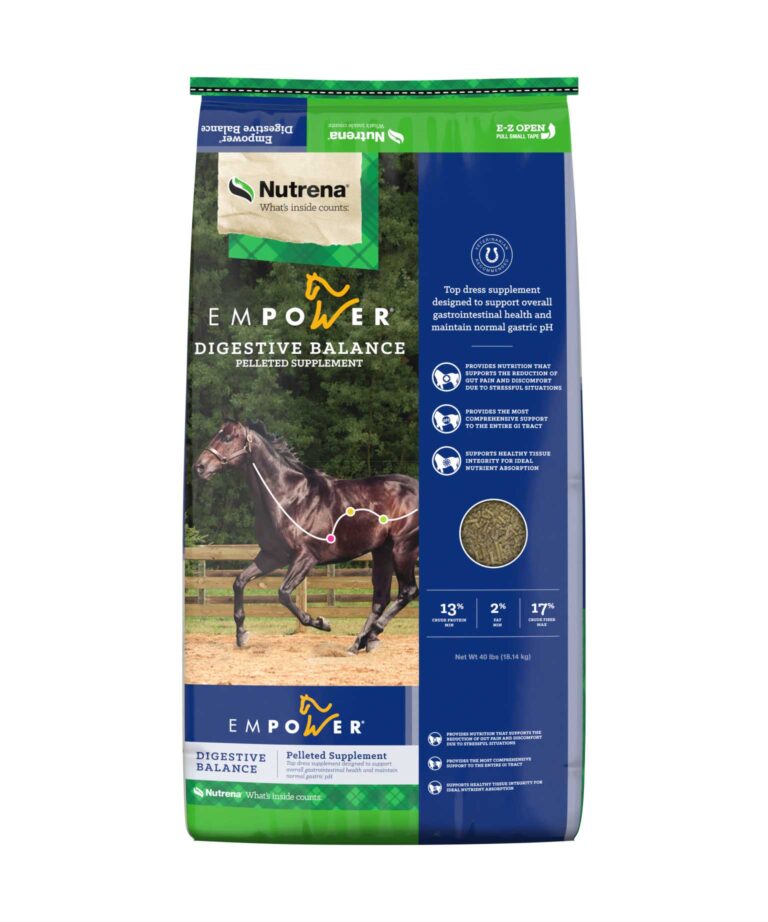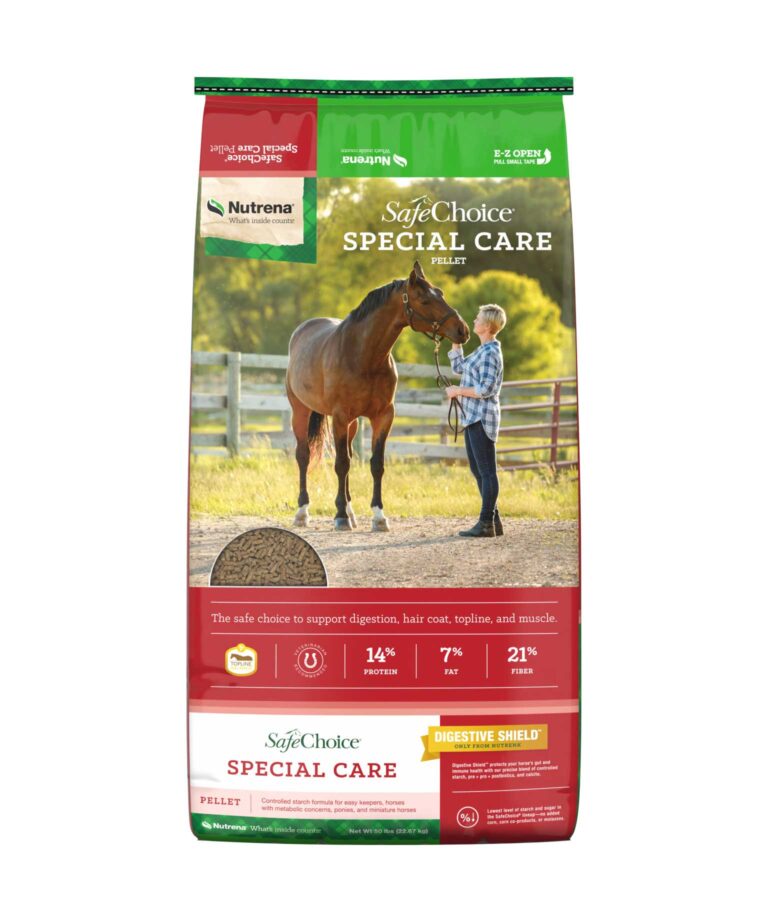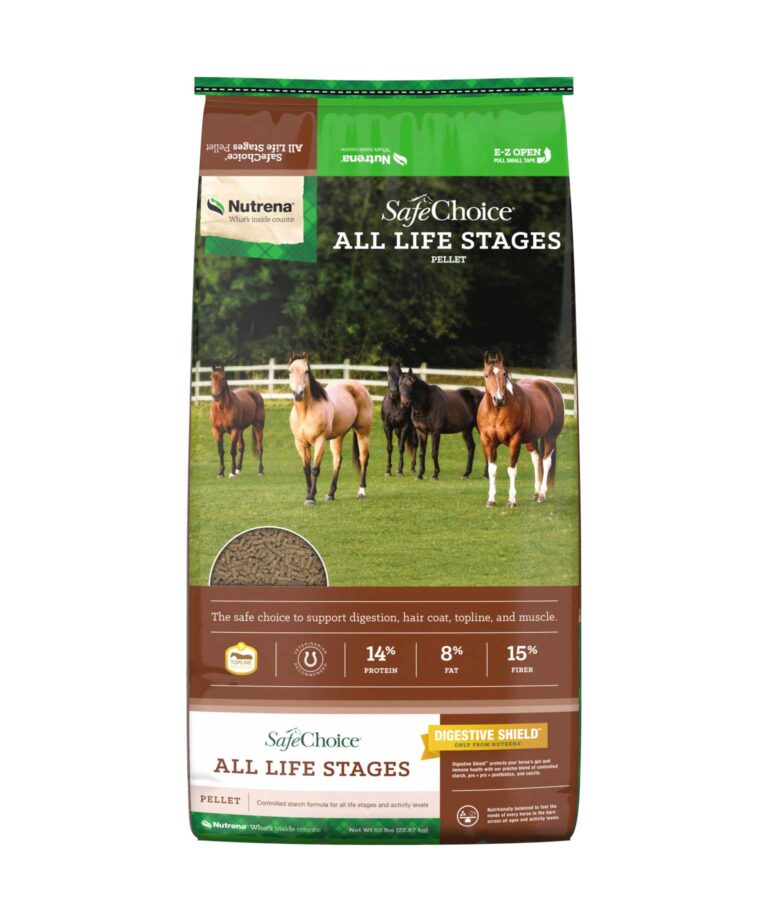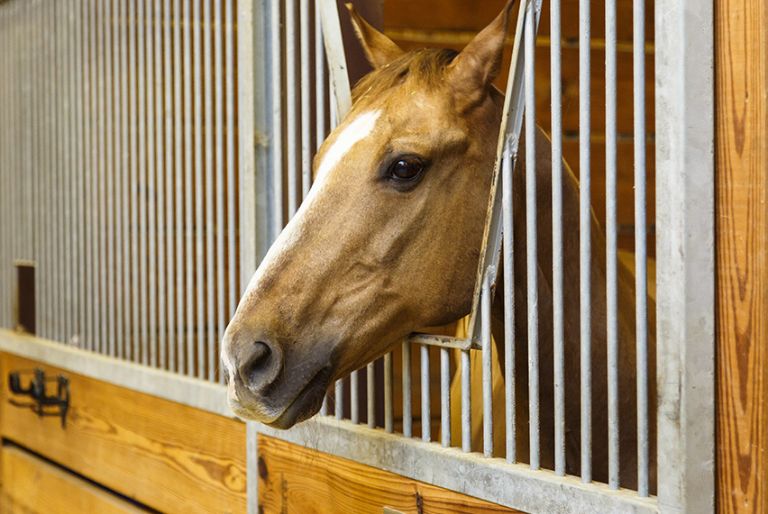Colic in Horses
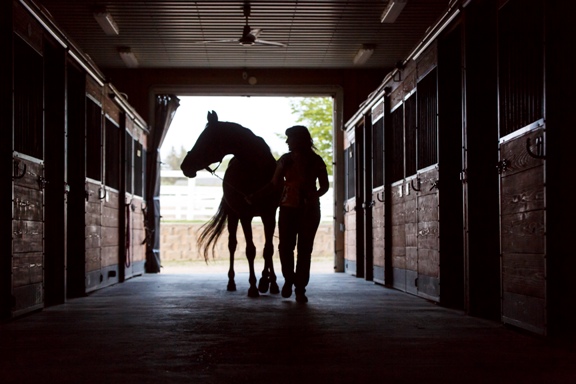
Ask most horse owners, and their number one fear for their horses is colic. To reduce colic we must first understand all the contributing factors that have a role in causing colic. The shame of it is that there are many factors that cause colic and they are mostly due to man’s mismanagement of horses.
Horses evolved in Asia and the Middle East in an arid environment. They were designed to be foragers as they are a hindgut herbivore. Due to their evolution in this environment, horses were forced to forage large areas (up to 20 miles per day) in order to get enough to eat. Horses have a small stomach only representing 7% of their digestive tract. Therefore they need to graze almost continuously. They selectively graze those plants that are the most nutritious. On occasion they would eat grass seeds but never in great quantity. As man domesticated the species, confinement was implemented and the horse’s whole way of life changed. Parasites also became a problem because of confinement to small areas. Horses are fed at man’s convenience which led to a change from a continuous forager to a meal eater, whereby the majority of the dietary energy is derived from grains. Most of the time, colic is due to feeding mismanagement resulting from a poor understanding of the horse’s digestive tract.
An increased risk of colic is associated with certain factors:
Texas A&M University Animal Science Department in conjunction with the Texas A&M Veterinary College did a very meaningful research project that illustrated the risk factors that were associated with colic (Cohen, Gibbs, Woods. JAVMA, 1997).
- Relationship to farm size showed an increase in colic as farm size decreased.
- Being stalled more than 50% of the time and a recent change in housing was associated with an increased risk of colic.
- Horses that were outside drinking had less risk than horses that were stalled watering from a bucket.
- Primary use of the horse (breeding, racing etc.) was not associated with colic, however a change in activity was.
- There was no relationship of feeding a vitamin, mineral, protein or fat supplement with colic.
A change in the type of hay may cause colic for many reasons. Hay of poor quality is often less digestible, predisposing to impaction. Changing types of hay as in alfalfa and bermuda, may be related to colonic pH changes resulting from calcium differences in the two hays. In another study, a change to lush pasture was associated with colic. The association of colic with a change in hay may have been skewed as Texas had a severe drought that year which may have caused a change to poorer hay quality any time a change was enacted.
An increased incidence of colic was associated with changes in activity levels. These levels were also associated with changes in housing and this may have had an additive effect.
The observation of horses that received anthelmintics on a regular basis shows that there is a decreased risk of colic due to the benefits of a preventive deworming program. There may be an increased risk of larval cyathostomiasis (small strongyles) where deworming occurred within the previous 2 weeks prior to examination. Deworming kills the adult small strongyles and causes an increase in larval activity following this event.
Colic Risk Factors:
- Recent change in diet
- Recent change in type of hay
- History of previous episodes of colic
- Horses stabled as opposed to pasture
- Recent change in housing
- Failure to deworm regularly
- History of recent deworming
Colic Prevention Program
- Practice Good Parasite Control: A series of fecal exams to detect the presence of worms would give a baseline assessment of the parasite level in the herd. Based on these results, a deworming schedule should be set up accordingly. Choose an anthelmintic that is broad in spectrum and safe for the class of horses and the level of infection present. Being overly aggressive in the choice of “purge deworming” products can have disastrous results, and consulting with your veterinarian about his/her recommendations about the types of products available is wise.
- Regular Dental Care: A horse’s teeth grow 1/8 inch per year and need to be floated annually. Grinding of grain contributes to reduced particle size and allows for salivation, with amylase aiding in the digestive process. Hay needs to be chewed thoroughly in order to aid the prevention of impaction. Horses with dental pain often shortcut chewing and therefore miss many of the benefits of their ration, because of this there is an increase in the incidence of choking that occurs in horses with dental pain.
- Grain or Concentrate: Feed a grain or concentrate that minimizes starch content (low nonstructural carbohydrate –a starch measurement in feed) and includes other energy sources such as fat and digestible fiber.
- Always feed grains/concentrates at least twice a day and never feed more than 0.5% of body weight at any one feeding.
- Processed feeds (pelleting, steam flaked etc.) increase starch gelatinization, thereby increasing pre-cecal digestion. The increase in pre-cecal digestion reduces the risk of starch spilling into the cecum and colon, therefore lowering the risk of colic.
- Starch that is not digested pre-cecally enters the cecum where it can cause gas production, lactic acidosis, loss of the bacterial flora, endotoxin production, colic and laminitis.
- Other factors that contribute to colic are: the source of starch, the amount of grain processing, the amount of feed being fed, the type/level of fiber in the diet, the timing of the feeding and the individual needs of the horse. These facts emphasize the importance of proper feed management.
- Timing of Feeding: Again remember that horses are continuous eaters so meals should be evenly spaced and if a meal is late, never feed more to make up for it. It is better to feed a little more hay and even reduce the amount of concentrate for that meal. Go back to normal feeding the next time.
- Hay/pasture: Horses experience colic less while on pasture. It allows them to graze continually and also provides exercise. Pastures are the best way to feed a horse; it also reduces feed and labor costs.
- Keep in mind that horses grazing on pasture can be problematic because of the variations in the weather throughout the year. For this reason hay should also be available when grass gets short.
- Practice some form of a pasture rotation system, mowing pastures frequently is a good way to keep it vegetative. The nutrient content is higher and the digestibility is increased when the pasture is immature.
- Lush high moisture pasture can cause colic, particularly when horses are first turned in. For this reason a slow introduction and a gradual increase in the time that they are allowed on pasture is critical.
- It is also a good idea to feed hay to the horses before they are allowed on pasture.
- As a general rule, hay should always be fed at a minimum of 1% of body weight when horses are kept in confinement.
- Individual Feeding: Feeding horses individually in stalls, pens or by tying the horse up is an ideal situation. This way they can be fed according to body weight and condition without fear of competition. Competition can cause a horse to bolt its feed (rapid ingestion and swallowing), allowing a dominant horse to overeat. Competition also increases the risk of injury.
- Dietary Changes: Remember that we are feeding the “bugs” rather than the horse. In the colon and cecum, millions of bacteria and protozoa reside where they digest fiber for the benefit of the horse. It takes time for this microbial flora to adapt to a dietary change. Gradually increase the new feed mixed in with the old feed over a 7-10 day period.
- Water: Fresh clean water is imperative. Decreased water consumption will contribute to impaction in the colon and cecum. Water consumption is based on palatability, temperature and availability. High solids, high mineral content and contamination are reasons that can lower intake. Many times at the start of winter, water intake drops because horses are not used to cold water. Impaction colics start about the second day after water intake decreases. In addition to this problem, horses will also lower their water consumption in the face of poor water quality which may be caused by some forms of algae that are toxic.
- Moldy Feed/Hay/Toxic Plants: Moldy feedstuffs should be avoided. Horses will not eat moldy hay if they have a choice. Sometimes baled hay will include toxic weeds and plants; therefore you should feed hay that is weed free. Careful inspection of feed and hay is a must.
- Foreign Material, Sand, Wood, Bedding etc: Indigestible materials will create problems if ingestion is significant. Sand is a problem when horses spill feed and attempt to eat it off the ground. Sand accumulates in the intestinal tract and will cause colic. This is another reason to tie horses while they are eating and then turning them out to pasture when they are done. Many times a deficiency of roughage will cause horses to eat wood or bedding. Likewise a salt or mineral deficiency will also cause horses to lick and chew on fences, trees etc.
- Blister Beetles: These are found in fields of alfalfa and are extremely toxic to horses causing a severe colic. Alfalfa that is beetle free is a must and responsible alfalfa dealers and growers should supply your roughages. Alfalfa that is from a 1st or 2nd cutting is the safest.
- Exercise: Feeding should be at least 2 hours prior to or after exercise. Grain feeding should be withheld 8 hours prior to strenuous exercise; hay should be given in small portions in multiple feedings the day of the event. Water should be available free choice.
- Weigh Horses and Feed: Horses should be weighed preferably by scale. If a scale is not available, then a weight tape can be used. Feed according to feed manufacturer’s recommendations using a horse’s weight and body condition. Feed by weight and not by volume. The weight of different feeds varies widely according to the density of the feed. A coffee can or scoop is fine but you should know the weight of a volume measurement.
- Fast Eaters: Horses that tend to bolt their feed (large bites with minimal chewing) should be fed in large bottom troughs where the feed can spread out. Some people have used smooth stones that can be placed in the trough to slow them down even more. New feeders are on the market with large dimples in the bottom which has the same effect of slowing consumption. It also looks like it will reduce waste because there is less opportunity to take large mouthfuls, which contributes to spilling.
- Happy Horses: Minimize stress. Keep horses in small groups; keep the groups the same. Horses are gregarious (they like each other’s company). Once a pecking order is established, anxiety is created by moving them around. Anxiety can cause colic; this is what happens due to a change of housing. Some horses pair up and if they have to be separated, use sedation to minimize anxiety.
After reading all of this one may wonder how horses have survived. Actually, however, if horses can be kept as much as possible in a natural state in a pasture environment and if one can keep in mind all of the above considerations, colic will be an infrequent occurrence.

